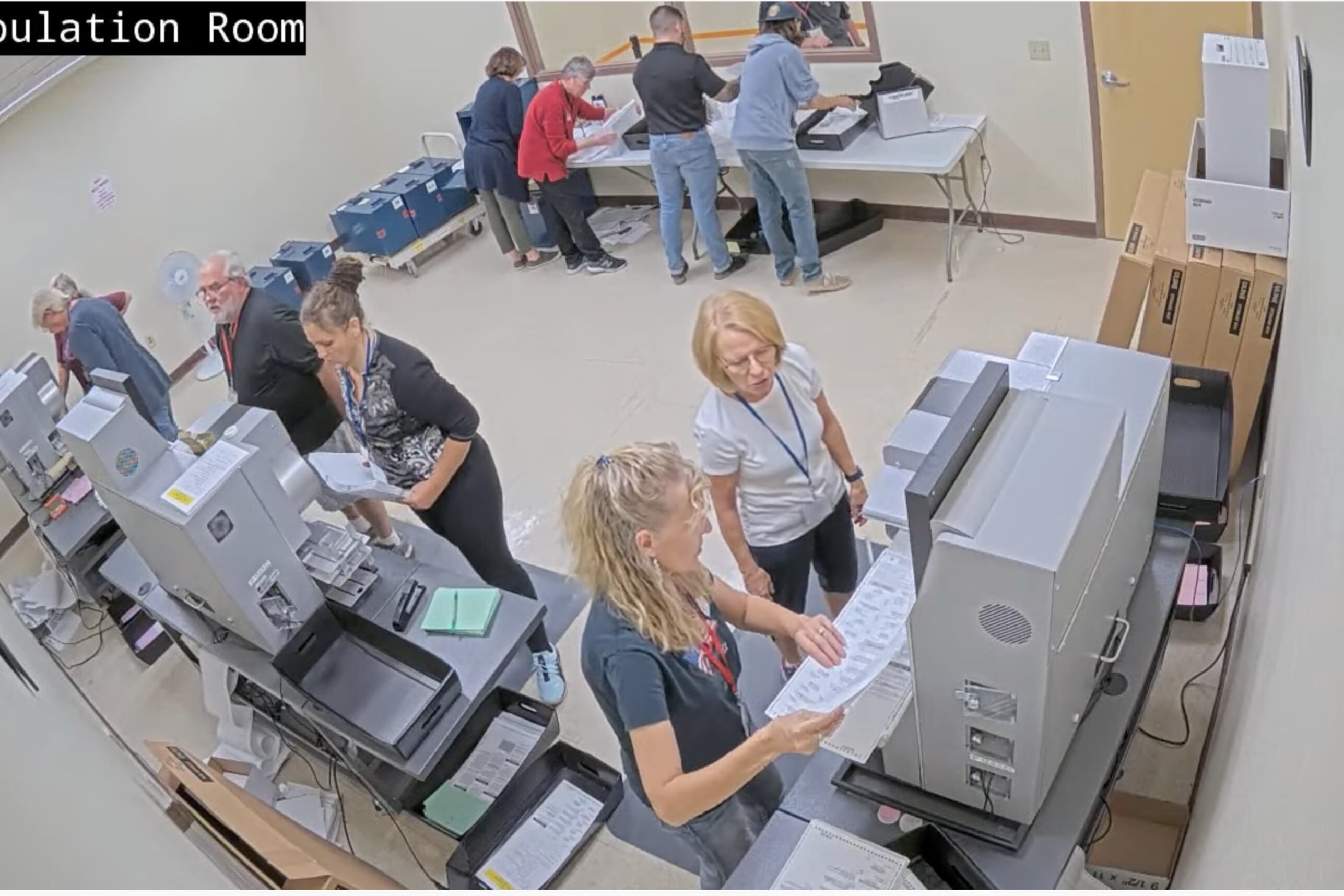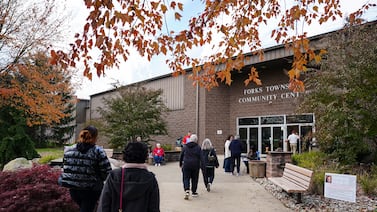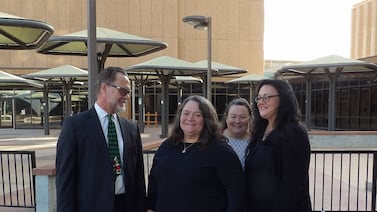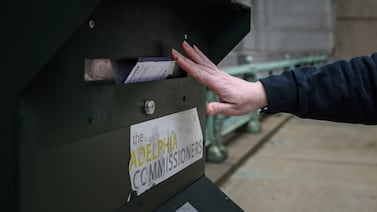Pinal County’s outgoing elections director collected a $25,000 bonus for running a smooth election despite reporting final results with significant inaccuracies, including around 500 uncounted votes in the neck-and-neck attorney general race.
Virginia Ross, the former county recorder brought in to oversee the election on a short-term contract, either did not catch the mistakes or failed to disclose them before the results were certified in November, according to county officials.
The inaccuracies were only revealed publicly last week as part of the results of the statewide recount, and officials attributed the problems mostly to human error during ballot counting on Election Day. This week the new elections director indicated that Ross may not have taken steps after the election to ensure the results were accurate. Regardless, she collected the bonus and retired.
Ross was brought on specifically to fix the county’s elections after a disastrous primary in which county officials made mistakes they later said were easily preventable, such as not ordering enough ballots for polling places. Ross was paid a towering $175,000 for four months of work, with the $25,000 bonus contingent on certain conditions.
County Supervisor Kevin Cavanaugh said at a supervisors meeting Wednesday that he would like to consider whether it’s possible to rescind Ross’s bonus. A few residents who spoke at the meeting demanded it.
“If errors were known to the board we would have not likely canvassed,” Cavanaugh told Votebeat prior to the meeting, referring to the supervisors’ Nov. 21 vote to certify the election results. “If we had not canvassed, Virginia Ross would not have received her $25,000 bonus.”
Votebeat was unable to seek comment from Ross, who has since moved out of state and has no publicly listed contact information or identifiable social media accounts. A county spokesperson said he did not have a way to immediately reach her.
County officials have assured voters that the recounted results are accurate. But county supervisors still have questions about how and why the results changed.
The inaccuracies still have potential ramifications for the outcome of at least one of the 2022 races. The revised results for the attorney general’s race brought an already-tight margin even closer, with only 280 votes now separating the winner, Democrat Kris Mayes, and her Republican opponent, Abe Hamadeh. Hamadeh’s lawsuit challenging the election results was dismissed last month, and he is now requesting a re-trial, saying the new information from Pinal’s recount amounts to new evidence that the election was inaccurate.
“Unfortunately, the recount identified more problems in an election already riddled with process failures,” his motion for a new trial states. “This further demonstrated that the vote count totals are likely inaccurate, with thousands of Arizonans’ votes not counted, thus casting further doubt about the actual result.”
When did county officials know of the problem?
Pinal County’s supervisors say they learned about the uncounted votes only after they voted to certify the results. At the meeting Wednesday, they said they still want a better picture of what happened and how to fix it.
Geraldine Roll, a lawyer from the county attorney’s office who took over as the new elections director in early December, explained in a report about the recount results last week that, along with several other problems, 424 ballots from 10 polling places weren’t counted in the initial results.
In Pinal County, ballots that voters cast in person on Election Day are not tabulated on the spot. Rather, they are securely transferred to the county’s headquarters where teams of workers put them into tabulation machines to be counted. The bulk of the errors Roll outlined occurred while the teams did that work. Some of the errors, Roll believes, may have happened because of paper jams or other problems that were not properly handled by the workers who were running the machines.
Cavanaugh told Votebeat that it was clear that training for workers was not adequate.
It’s unclear what exactly Ross knew about the problems before she presented the initial results to the supervisors for their required certification. Roll told the board she believes county officials had enough information about problems to at least raise questions about the results prior to when the results were certified, although she didn’t outline who knew what at the time. She said the vote to certify should have been delayed while those questions were investigated.
“We had enough to have raised a few questions and we should have taken more steps before we canvassed,” she told the supervisors. “We certainly had time.”
The vote to certify the results took place on Nov. 21, one week earlier than the state’s certification deadline for counties.
Ross told a local reporter in an article that published Nov. 22 that she knew workers didn’t follow proper procedures when a ballot didn’t scan properly.
“We had a couple of instances where our poll workers needed a little more training on how to handle that scenario,” Ross told inMaricopa.com.
Proper poll worker training was one of the conditions required for Ross’ bonus.
Ross became elections director after the county fired its last elections director, David Frisk, in the wake of the botched primary. Her $175,000 salary for four months of work was far more than her predecessors made. Frisk’s annual salary was about $100,000, and before that, prior Elections Director Michele Forney was paid about $97,000.
Ross’s contract promised the $25,000 bonus on the following conditions: accurate and properly formatted ballots delivered to correct precincts in sufficient quantities; polling locations opened on time and properly equipped; poll workers properly trained; consistent and accurate messaging provided to voters; a successful test on the county’s tabulation machines, all reports submitted per statute; results certified by the board; and coordination with city and town clerks and all relevant jurisdictions.
Best practices for checking results not followed
Counties typically have several checks and balances in place to ensure all ballots are counted, but it’s unclear if or how Ross checked the election results before they were finalized.
Roll told the supervisors that Ross packaged the final election numbers “within a half hour or so” of when officials finished counting votes.
“Virginia was pulling the canvass off the election software and sending it to the Board of Supervisors,” Roll said. “No opportunity was taken to really look at any of those numbers carefully.”
County election officials can check the accuracy of their vote counts by comparing the voter check-ins to the total number of ballots cast at each polling location. And, in the precinct model that Pinal County uses, they can compare the total number of ballots printed for the precinct with the total cast ballots, unused ballots, and spoiled ballots from the location after the election.
There’s no state law requiring this type of reconciliation, but it’s among the best practices that the secretary of state’s office emphasizes to counties in training, state elections director Kori Lorick told Votebeat last week.
Prior to Ross’s tenure as elections director, Pinal County had been diligent about performing such reconciliation checks, Forney said.
Forney said she would spend days following an election using the process to check the results in several different ways, including by studying the total ballots printed, ballots tabulated, and voter check-ins.
For example, in the few days after the 2020 election, Forney said, this detailed process allowed her to identify that dozens of ballots from one precinct hadn’t been counted. With oversight from the political party leaders, the county retabulated the ballots from that precinct to ensure the results were accurate before they were final.
Forney said she didn’t know whether the county still had these practices in place. But she said, if she were in charge and knew of problems, she wouldn’t have left before the recount.
“I would not have left my position as elections director until after that was done,” Forney said.
The county started preparing for the recount shortly after the election was certified. It was officially ordered by the court on Dec. 5.
Meanwhile, Ross retired on Dec. 2, according to county spokesperson James Daniels, and moved to Texas the next day.
Jen Fifield is a reporter for Votebeat based in Arizona. Contact Jen at jfifield@votebeat.org.








